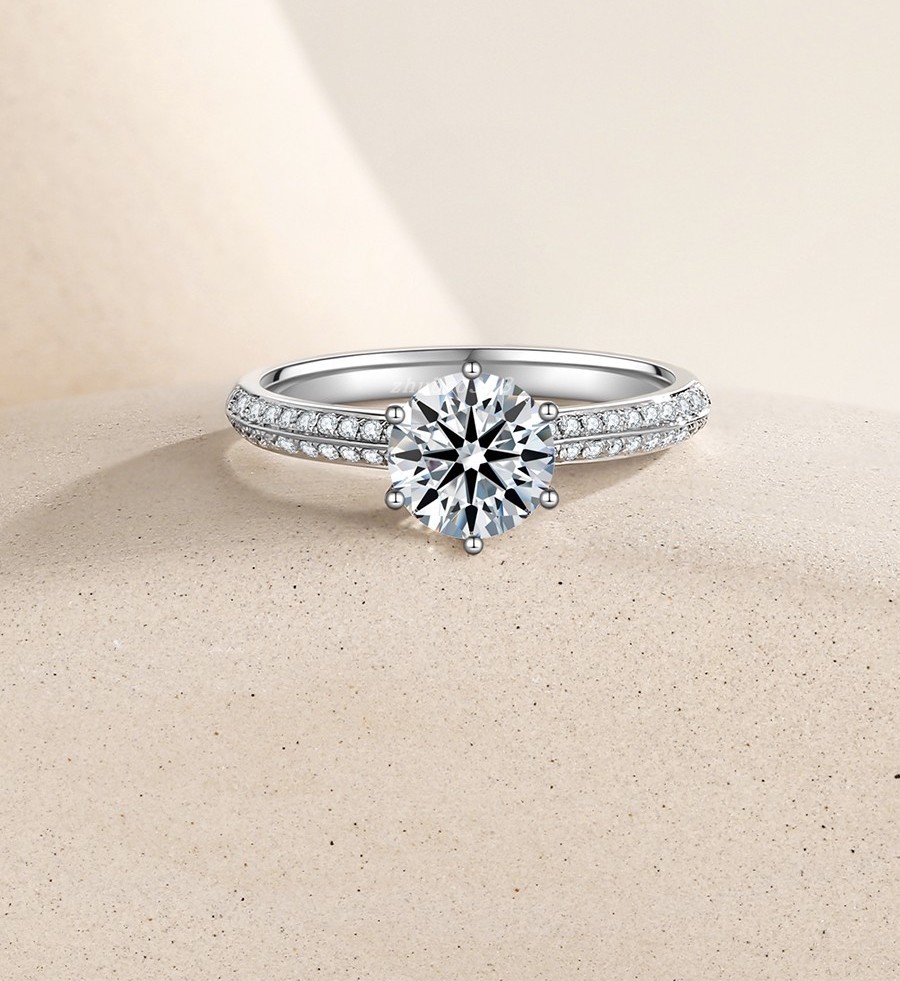Lab-grown diamonds, also known as synthetic or cultured diamonds, are created through a process called chemical vapor deposition (CVD) or high-pressure high-temperature (HPHT) method. Here’s a general overview of how lab-grown diamonds are produced:
- Seed Creation: The process starts with a small diamond seed, which can be a natural diamond fragment or a lab-grown diamond.
- CVD Method:
a. Diamond Growth Chamber: In the CVD method, a diamond growth chamber is used. It consists of a sealed chamber that contains a carbon-rich gas, typically methane, and a substrate where the diamond will grow.
b. Heating: The chamber is heated to extreme temperatures, usually around 900 to 1200 degrees Celsius.
c. Activation: The gas is activated, usually by using microwave or radio frequency energy, causing the carbon atoms to break apart and release individual carbon atoms.
d. Diamond Formation: The released carbon atoms settle on the substrate, layer by layer, forming a diamond crystal. This process can take several weeks or longer, depending on the desired size of the diamond. - HPHT Method:
a. Diamond Seed and Metal Catalyst: In the HPHT method, a diamond seed is placed in a press with a small amount of metal catalyst, such as iron or nickel.
b. High Pressure and Temperature: The press applies extreme pressure, typically around 5 to 6 GigaPascals, and high temperature, usually around 1500 to 1700 degrees Celsius.
c. Carbon Dissolution: The pressure and temperature cause the metal catalyst to dissolve carbon, creating a carbon-rich environment.
d. Diamond Formation: The dissolved carbon is deposited on the diamond seed, gradually building up layers of diamond crystal. This process can take a few weeks or longer. - Post-Growth Treatment: After the diamond growth is complete, the lab-grown diamond may undergo additional treatments to improve its color and clarity. These treatments can include high-temperature annealing or irradiation.
- Cutting and Polishing: The rough lab-grown diamond is then cut and polished by skilled diamond cutters, similar to the process for natural diamonds. This step brings out the diamond’s brilliance and enhances its optical properties.
It’s important to note that lab-grown diamonds have the same chemical composition and crystal structure as natural diamonds. They are optically and physically identical but are created in a controlled laboratory environment rather than being formed naturally in the Earth’s crust.



One response
Hi, this is a comment.
To get started with moderating, editing, and deleting comments, please visit the Comments screen in the dashboard.
Commenter avatars come from Gravatar.